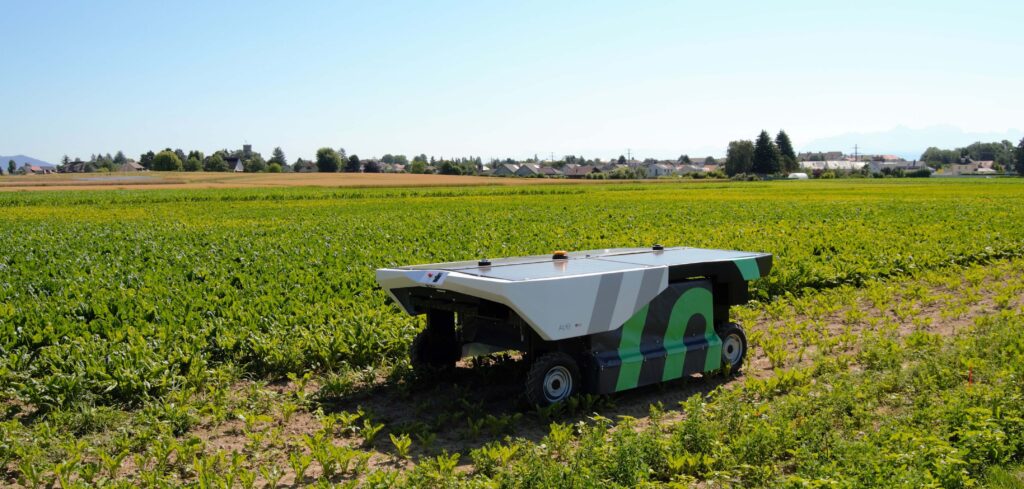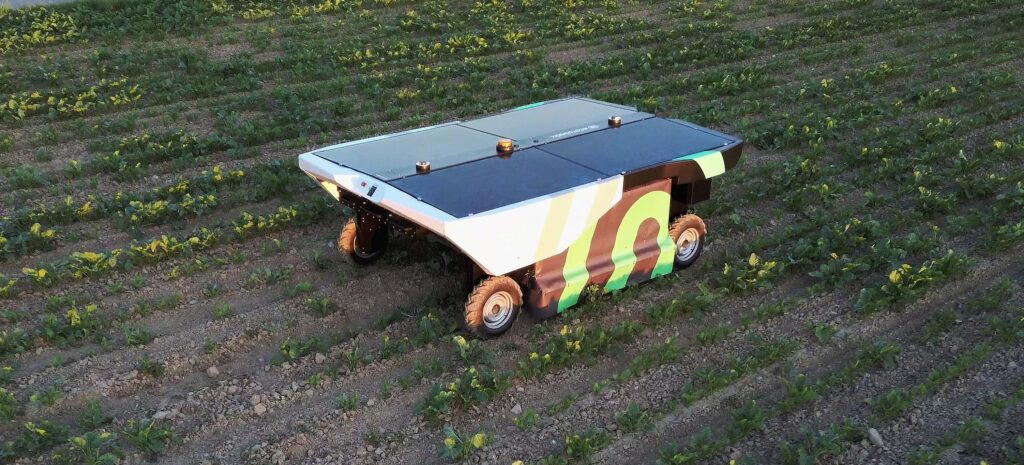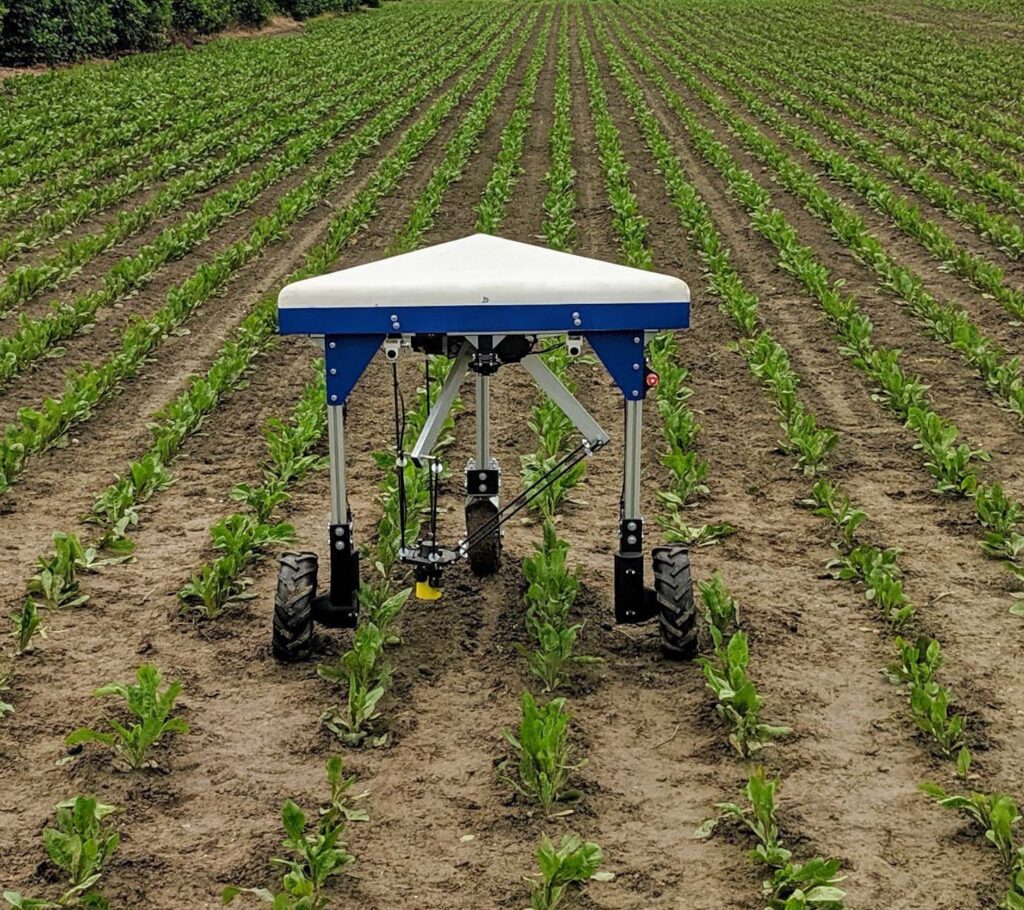It’s less talked about than automotive, but the agricultural robotics market is very active
Maria Luisa Doldi
According to the numbers presented at FIRA 2020 – the international forum of agricultural robotics that has been presenting trends and innovation of the sector for 5 editions each year in December – the global agricultural robotics market would amount to $8 billion in 2020 compared to $4.7 in 2018. In 2025, the expected size is $18 billion. To make a comparison: the market for herbicides applied with traditional dispensers is $30 billion. Definitely, then, robotics has a respectable dimension when considering the young age of the sector and the obstacles in terms of cost and acceptance that agricultural robots still face.
But agriculture is changing and robots seem to be able to respond to some of the current issues in the agricultural sector. Labour shortage, first of all, due to the fact that people move away from the land to do other jobs or to pandemic situations that force to close the borders and therefore block the workforce, generally coming from other countries; the fact that the population employed in agriculture is aging and the generational change is not guaranteed; the fact that the added value of the agricultural market is often fluctuating and so is the income, all factors that make work in the fields unattractive. «Adding a bit of robotics, – says Christian Huygue of INRAE, Institut national de recherche pour l’agriculture, during FIRA, – could increase the attractiveness of the sector, as well as facilitate certain tasks that are objectively difficult to accept today». The climate also plays a significant role in the possibility of success of agricultural robotics. As stated by Fabien Arignon of SITIA – a company that has been active in the field of agricultural robotics since 2014, where he has brought his expertise from the aeronautical and automotive sectors – one of the main demands of farmers is flexibility: the unpredictability of the weather forces them to carry out agricultural work in time windows that are difficult to predict and often of limited duration. This requires speed and flexibility that cannot always be expected from human workers. On the contrary, a robot is always ready, 24 hours a day. Finally, the robot can take on tiring or repetitive work while at the same time human intelligence can be used for activities of greater intellectual value and to create added value in the company.

AVO is an arable crop robot and performs weed control operations autonomously in flat fields and row crops. In addition to autonomy of movement and feeding, its great advantage is its accuracy in identifying weeds and using herbicide (Photo credits: AVO – ecoRobotix Ltd)
Tools for Sustainable Agriculture
The path taken by agriculture in recent years, and even more so now with the Green Deal strategy, leads towards an increasing sustainability of agricultural practices and a naturalization of the cultivation context, to be considered as an ecosystem in which the biological variety is an asset to be protected, not an evil to be eradicated. It is an agriculture that sees an increase in the diversity of plants in the field and therefore the complexity of the cultivation system: greater diversity means greater complexity, but at the same time, for example, activation of mechanisms of natural protection and enrichment of the ecosystem. Certainly the challenge that robotics faces in this situation is that of having to act and operate in a very inhomogeneous and standardized environment, very diversified even on the same field. Highly developed sensors are needed to cope with this inhomogeneity, sensors that can quickly switch between different situations. At the same time, however, the robot has a lot to offer in this situation. Precisely because of advanced sensor technology, it can perform new tasks. Concretely? Huygue affirms: «With special sensors, the robot can carry out a preventive and prophylactic action by highlighting parts of the plants affected by pests and selectively eliminating them; it can make visible what is still invisible to the human eye. For example, in apple scab, the disease becomes visible to the human eye about 12 days after the infection. With special sensors, it is visible to the robot as early as day two, allowing early and timely intervention». This could be another ingredient in the success of the application of robots in agriculture: doing operations different from what the human operator or traditional machines can do. «Robots have one advantage over traditional machines: they are born from scratch. So, we might as well design them to make them do new things, things that machines today can’t yet do».

According to the manufacturer, AVO can save up to 90% in the use of herbicide compared to traditional methods (Photo credits: AVO – ecoRobotix Ltd)
AVO reduces the use of pesticides by 90%
Speaking of robots that help make agriculture more sustainable: Swiss company Ecorobotix https://www.ecorobotix.com/en/avo-autonomous-robot-weeder/
presented the AVO robot at FIRA, which performs weed control operations autonomously in flat fields and row crops. Using a state-of-the-art machine-learning algorithm and relying on RGB sensors, the robot selectively detects and sprays weeds with a micro-dose of herbicide. Centimeter-accurate detection and targeted spraying reduce the volume of herbicide used by more than 90 percent, while ensuring that crops are not sprayed. AVO operates completely autonomously and is powered by solar energy and rechargeable batteries. Through the user interface, the operator can indicate to the robot the field boundaries and crop line information. The system then generates a navigation path considering field constraints and user predefined inputs. By combining GPS RTK positioning and visual navigation, AVO navigates with a high degree of accuracy. The all-wheel drive system allows the robot to overcome obstacles and operate on slopes common in cultivated crops. All four wheels can be steered independently, resulting in high robot maneuverability and a small turning radius, thereby minimizing untreatable field areas. AVO’s standard productivity is 0.6 hectares per hour. The robot can also operate at night. Depending on sunlight conditions, battery charging and soil conditions, the robot can work up to 10 hectares per day (including night operation).
By means of a multi-camera vision system, AVO detects the weeds considered pests and sprays them by passing over them with its spraying tool. The spraying tool consists of 52 equally spaced nozzles on a height-adjustable spray bar, between 15 and 30 cm above the ground. According to the manufacturer, under ideal conditions more than 90% of weeds are identified and the error is less than 5%. AVO can be used for contact, systemic and non-synthetic herbicides. The operator can control and monitor the AVO robot via the ecoRobotix ™ mobile app and define its missions via the desktop web app. During operations, robot data is uploaded to an ecoRobotix ™ server for viewing, analysis and downloading. Information includes operation status and progress (e.g., real-time location, battery charge, herbicide mixture level, etc.), as well as weed density data.
Not just a matter of technology
But robotics is not just about technology. At FIRA 2020 in more than one seminar there was a discussion about the appreciation of robots by operators and society and the need for responsible robot design. «It’s not just a question of asserting technology» Hygue says, «but also of creating technology with users and for users». This concept was best expressed by David Christian Rose – University of Reading (UK), who in his presentation illustrated the need to define a responsible robot design methodology before their wide affirmation. Responsible design includes 4 main ingredients:
- Anticipation: understood as the ability to identify, predict, and explore the potential consequences of an innovation and its introduction on a large-scale;
- Reflection: on the characteristics a robot must have to be safe, useful, reliable;
- Inclusion: understood as the need to involve all possible stakeholders, their proposals or ideas in the design and planning of new machines;
- Responsiveness: the ability to respond quickly to technological advances, user requests, legislation and to adapt innovation to the contingent demands of the ecosystem in which it operates.
The purpose of this approach, says Rose, should be to improve robot design so that it is centered on users, their needs and ecosystems, and is the result of knowledge exchange among experts. It’s imperative that this happen before robots become widely established to avoid possible controversy of the technology because, Rose says, the last thing you want is for the technology to become established in an ecosystem that isn’t strong enough to avoid any damage that would block the adoption of technology. The robustness and reliability of the technology, when it gets to the field, are a key factor in determining its successs.

Odd.Bot Weed Whacker moves autonomously through the field, identifies weeds and removes them mechanically (Photo credits: Odd.Bot)
Odd.Bot Weed Whacker: the successor to manual and chemical weeding
Today the main solutions applied for the elimination of so-called pests are the use of chemicals or mechanical elimination, very often carried out manually. The use of chemicals in agriculture is gradually restricted by the regulation and manual practice is not always feasible and economically viable. This is why the Odd.Bot (https://www.odd.bot/ ) team has developed Weed Whacker, a mechanical weeding robot for arable crops. This robot uses machine learning and artificial intelligence technologies to distinguish crops from weeds and remove weeds mechanically. The idea was born in 2018 and last summer the first machines and concept were validated by Wageningen Research, where the robot was tested. Odd.Bot is now looking for partners to do further field testing. The robot moves autonomously along row spacings, even of high-density cereal crops. In addition to specific machine-learning algorithms, it is equipped with RGB optical sensors that allow it to differentiate between crop and weed. A mechanical arm then extends downward from the robot to extract weeds as it moves. Patents have been filed for the grippers that extract weeds from the ground. Cameras and sensors keep the machine tracking along the inter-row path. This robot weighs 550 kg and its dimensions are 1.5×4 meters; it uses electricity to move. Odd.Bot expects to arrive on the market in 2023 but already in 2021 a program will be launched for the first users who will use the machines in the pilot phase. Odd.Bot will also propose a business model based on “pay what you use” or “robot as a service”. The company is primarily targeting organic farming for which it offers an ideal weeding solution. Theoretically, however, it is a solution that can be embraced by anyone”.
LIST OF FIGURES
N. FILE: 241946698 In apertura da adobe
N. FILE: 225543689
Figure 2
AVO is an arable crop robot and performs weed control operations autonomously in flat fields and row crops. In addition to autonomy of movement and feeding, its great advantage is its accuracy in identifying weeds and using herbicide (Photo credits: AVO – ecoRobotix Ltd)
3:
According to the manufacturer, AVO can save up to 90% in the use of herbicide compared to traditional methods (Photo credits: AVO – ecoRobotix Ltd)
Figure 4:
Odd.Bot Weed Whacker moves autonomously through the field, identifies weeds and removes them mechanically (Photo credits: Odd.Bot)



